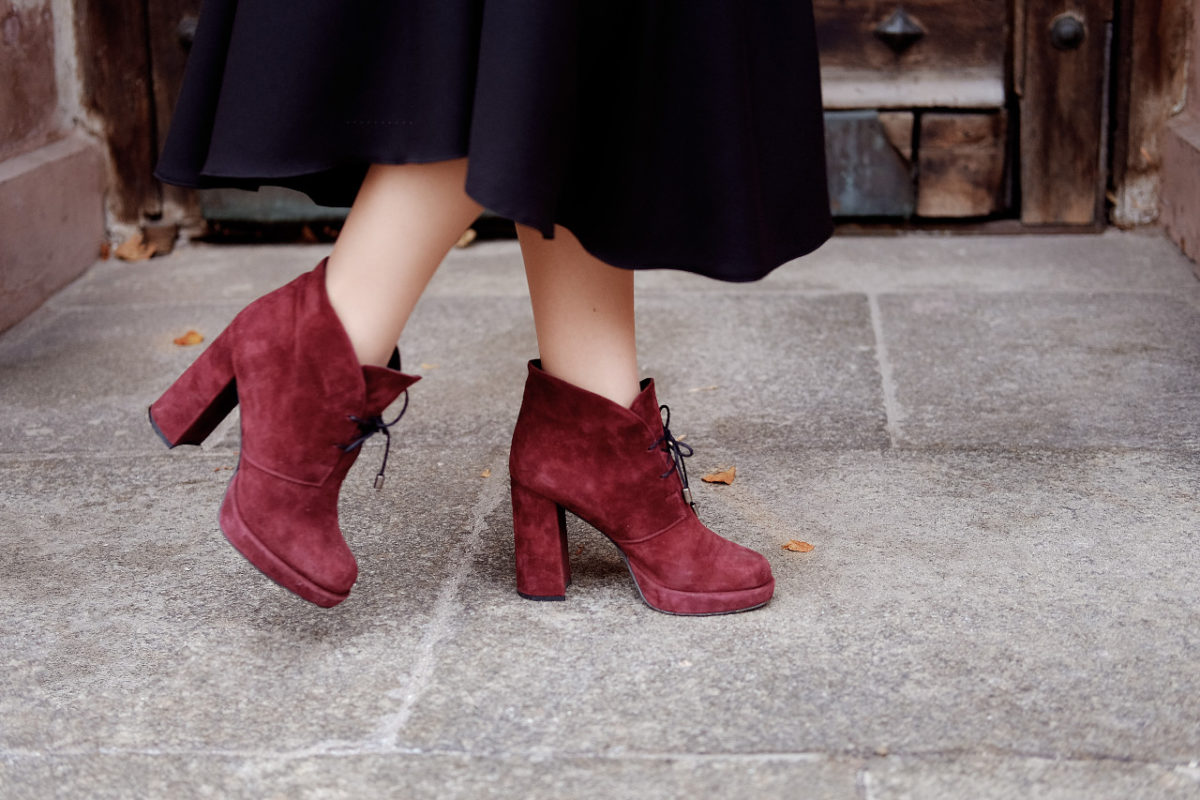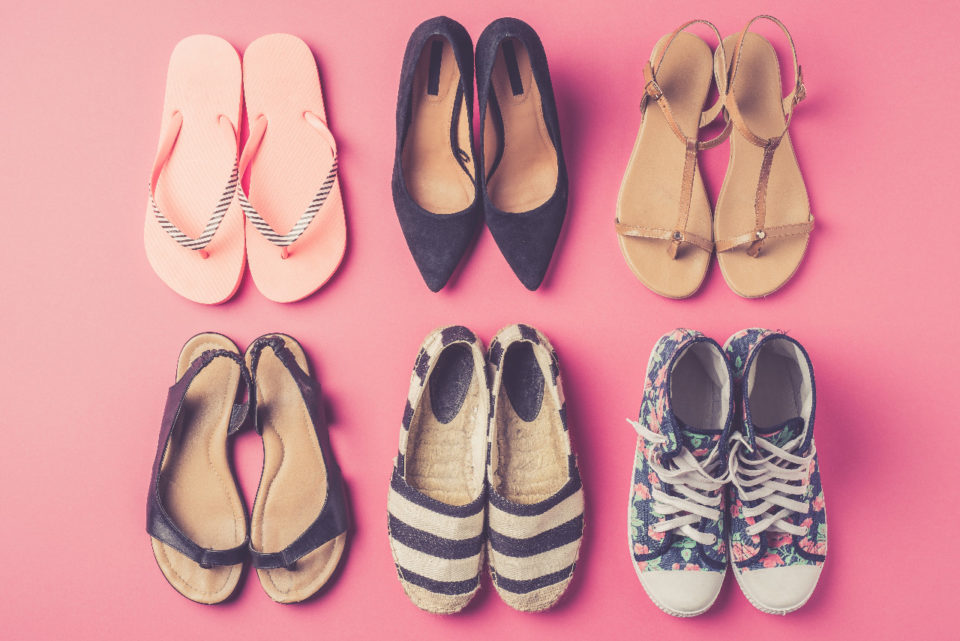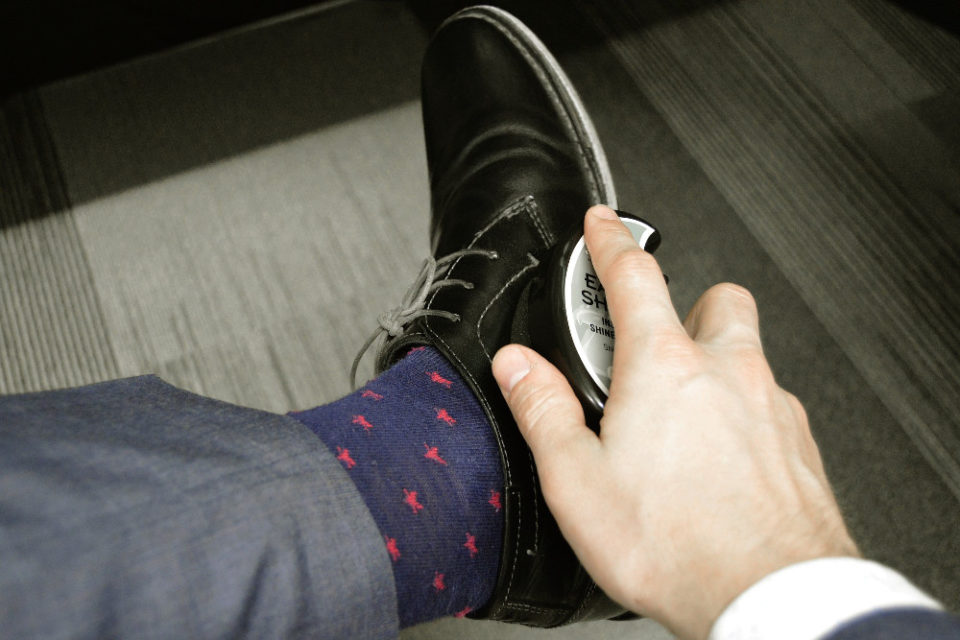
The excitement of having new shoes becomes tarnished when they start to pinch after wearing them for a long time, with blisters and chafed patches of skin gradually developing. Breaking new shoes in properly can help. But how exactly do you go about breaking new shoes in properly and what other tips are there for preventing sore feet, blisters, and chafing in new shoes? We’ve got the answers for you ?
Why should you break new shoes in anyway?
Generally, you can tell quite quickly as soon as you start wearing new shoes. They pinch in certain places, and before you know it you’re dealing with chafed skin or blisters. Your feet are sore too, and you just can’t wait to get home to take them off again. If you want to avoid this in future, you need to break your new shoes in properly.
How do you break new shoes in properly?
The following tips can be helpful to combat the problem of shoes that pinch. Even when you’re buying shoes, there are things you can do to tackle the problem:
- Buy shoes in the evening: Our feet change over the course of the day – to be more precise, they swell up. So it makes more sense to buy shoes in the afternoon or evening. If you go shopping for shoes in the morning instead, you run the risk that your new shoes will get increasingly tight throughout the day.
- Take a pair of thick socks to go buy shoes: No joke. When you’re buying new shoes, it can be a good idea to try them on with slightly thicker socks. That way, you can basically simulate the way your feet get bigger during the day.
- It’s not just your shoe size that matters: When you’re shopping for new shoes, it’s not just your shoes size you need to think about. The width of the shoes and of your feet is also crucial. If you don’t keep this in mind, your big toes and little toes tend to suffer, leaving you with chafed skin and blisters.

If it’s too late already and you find your shoes pinch, the tips below may help you to break your new shoes in properly:
- Damp newspaper overnight: It may sound strange at first, but it really does seem to work. Just put a piece of damp newspaper inside your new shoes and leave them overnight. This is supposed to widen the shoes a little so they aren’t too tight anymore, which means they won’t pinch anymore. So-called stretching sprays are meant to have a similar effect.
- Only wear shoes for a short time at first: This is basically what we mean when we typically think of breaking shoes in. New shoes should never be worn all day long without a break. For the first few days, it’s best to wear new shoes for just ten minutes at a time, and then gradually extend this time, bit by bit. Once you’re able to wear them for about an hour at a time without them hurting, you’ve successfully broken in your new shoes.
- Use a hairdryer: If your new shoes pinch, you can put some thick socks on and then use a hairdryer on those areas where your shoes feel too tight. Simply continue wearing the shoes while these areas cool down. This should help make your new shoes more comfortable.
- Prevent rubbing: Let’s be honest, who wants to spend days breaking in new shoes? There is an easier way to prevent sore patches and blisters caused by new shoes: Our pjuractive 2SKIN. Simply apply the invisible anti-chafing gel to those areas where you notice your shoes starting to rub. So instead of having to deal with uncomfortable, irritated skin, the gel forms a protective film on your skin that protects your feet.
Shoes you definitely need to break in
Breaking in leather shoes

Especially if you’ve bought new leather shoes, you will soon notice that they aren’t all that comfortable at first. This is mainly due to the fact that leather is a natural material that becomes naturally more supple over time. The following tips can help you speed up the process and break leather shoes in properly:
- The trick with thick socks is also helpful when breaking in leather shoes. It is even more effective if you dampen the socks a little. This will pre-soften the leather and make it easier to stretch.
- You can always use a shoe stretcher instead of breaking in your shoes. It widens your new shoes and can save you from having to break them in – and not just with leather shoes.
- Damp newspaper is recommended here too. Put it inside your new leather shoes and it will help widen them and reduce the potential for rubbing.
- If you don’t want to try any of these tips because you’re just too afraid you might get something on your expensive leather shoes, you can always visit a cobbler. They have special tools to give your new leather shoes the best possible fit.
Breaking in sneakers or running shoes properly
If you like running or doing sports and have ever tried doing it wearing shoes that haven’t been broken in yet, you will most likely have suffered for a long time afterwards with painful blisters and sore, chafed skin. That’s why it is recommended that you break in your sneakers or running shoes before you wear them properly for the first time. You can do this by wearing them on a short run, to walk the dog, or even for a quick training session. The laces are a good place to start. As soon as you can tie them a little tighter than when you first bought them, you’ll know that your running shoes are getting wider and may even be broken in well enough for you to wear them for long runs and training sessions.
Besides leather shoes and sneakers, it is also particularly important to break in business shoes or hiking boots adequately. After all, spending a full working day in shoes that are too tight or a hiking trip with hiking boots that haven’t been broken in properly can be very painful. Women are familiar with this problem too – whether it’s in high heels, sandals, or summer shoes generally.
Nevertheless, if you take preventive steps, break new shoes in properly, and use our pjuractive 2SKIN for additional protection, in future you should be able to avoid blisters and chafed skin in new shoes that haven’t been broken in ?